Churrasco is the name given to a Brazilian barbecue style that originated in the state of Rio Grande do Sul, the furthest southern state of Brazil. Churrasco has a special place in Brazilian culture. If you are ever lucky enough to be invited into the household of a family in Brazil, you will likely arrive at the aromas of a sizzling churrasco, cooking away, in your honour.
Generally, served with ice-cold beer and an assortment of yummy side dishes, experiencing an authentic Brazilian Churrasco should be on everyone’s bucket list.

The Origins Of Churrasco
It all started in the 16th century when Spanish conquistadors introduced cattle and horses to the fertile lowland plains covering central-east Argentina, Uruguay, and Rio Grande do Sul, Brazil. An area named the Pampas. Over the decades, many of these animals escaped or were released into the wild. The escapees flourished and multiplied into vast herds of wild beasts that roamed free across the plains. These wild herds attracted the mestico frontiersmen who came to make a livelihood herding the cattle for market. These people came to be known as Gaúchos and were described as an inhabitant of the plains of Rio Grande do Sul or the pampas of Argentina descended from European man and aboriginal woman who devotes himself to lassoing and raising cattle and horses.
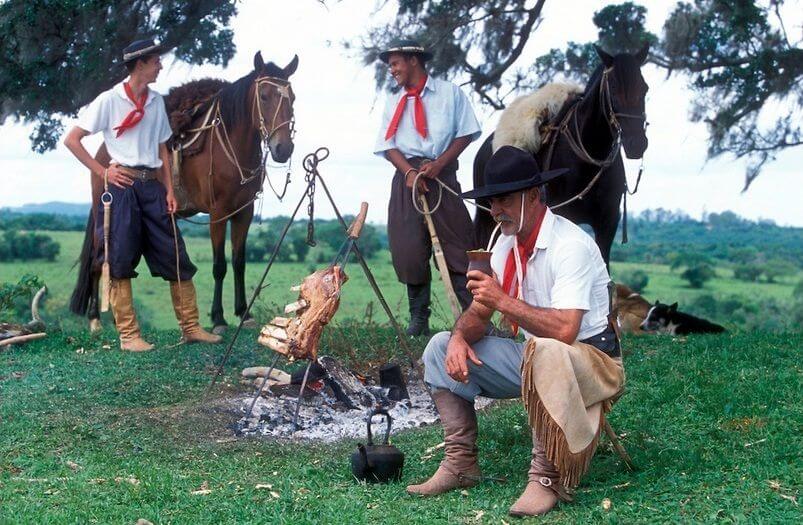
With an abundance of wild free cattle, the gaucho diet consisted of large quantities of beef. For example, after the men returned from a successful herding expedition, the community would celebrate by slaughtering some cattle to cook. The gauchos were simple people; hence, the meat was butchered into large cuts (or sometimes whole bulls were even split down the centre and the two parts cooked whole!), seasoned with rock salt, and roasted over large beds of hot smouldering timbers. The cooking method was designed to limit smoke production and not overwhelm the meats with too many foreign flavours and distract from the meats’ natural flavours. The meats cuts were skewered on espetos (skewers) or strapped onto large timber frames, slow-roasted over the smouldering coals until the top layers were crisp and caramelised. Once complete, the meat was carved off with a knife and served with various local greens, beans and rice.
Churrasco Culture Today
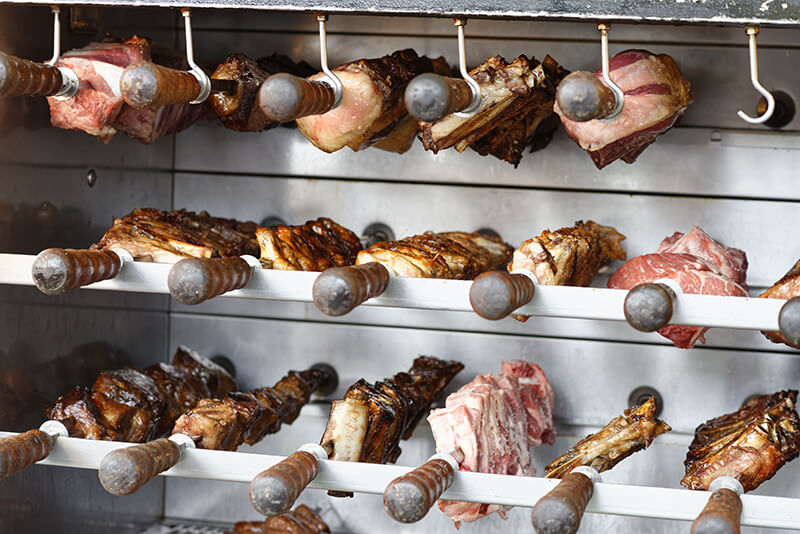
The churrasco is an important part of Brazilian culture, a way to catch up and celebrate with friends and family; they will cook a churrasco anywhere! At home, in a park, at the beach, even on the street with all the neighbours joining. Anytime is the right time for churrasco.
Although some people still cook traditionally – over a smouldering woodfire built on the ground. Out of convenience, most people use a churrasqueria. A churrasqueria is a BBQ griller designed to cook meat using skewers, baskets and/or grill plates. They can take different forms, with some portable and similar to a Weber, and some are designed into a building’s architecture, similar to a woodfire pizza oven. Today these are found in the courtyards and kitchens of family homes all across Brazil. Some apartment blocks are even built with a common churrasqueria area for the residents to share.
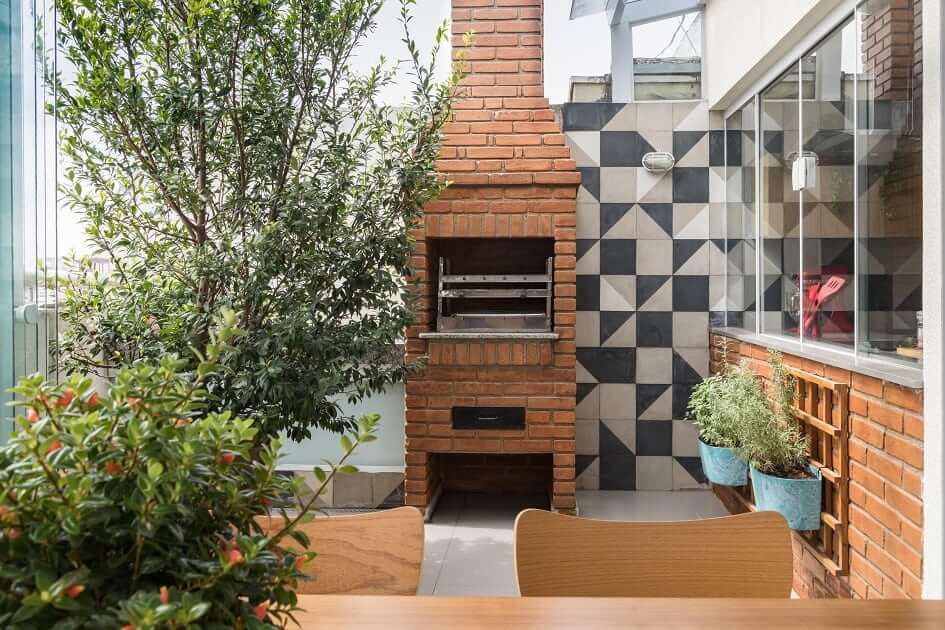
What Can You Expect At A Typical Family Churrasco?
Picanha
Firstly, there is usually always a picanha, also known as a rump cap. The picanha is the most popular cut for churrasco. Typically, it is cut into steaks, and each is seasoned with just rock salt (as we know it is the old gaucho way). The picanha is cooked on the grill or skewered with an espeto and positioned over the hot coals. Along with the picanha they will also grill linguica (sausage), queijo coalho (a cheese similar to halloumi in texture and taste), coração de frango (chicken hearts, abacaxi (pineapple, usually dusted with cinnamon) and pao de alho (garlic bread).
Cerveja
You will rarely be served churrasco at a friend’s place and not also receive an ice-cold cerveja (beer). In fact, if the beer is not within a degree of freezing point, your host will likely not serve it to you. Brazilians are very particular about the temperature of the beer they serve. I don’t know how they do it, but they do manage to serve the coldest beers you will ever drink.
Linguiça
A traditional Portuguese sausage that is very popular in Brazil. Typically the sausage is made with pork and is seasoned with herbs and spices. It is purchased in a long snake-like coil by the kilogram from a butcher.
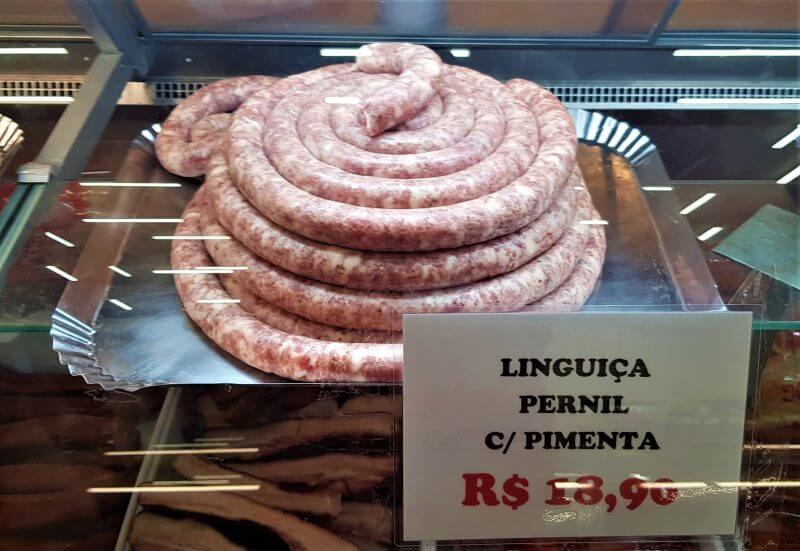
Chimarrão
A tea made from erva-mate (yerba-mate), a plant native to Rio Grande do Sul and usually consumed hot from a cup made out of a dry gourd.
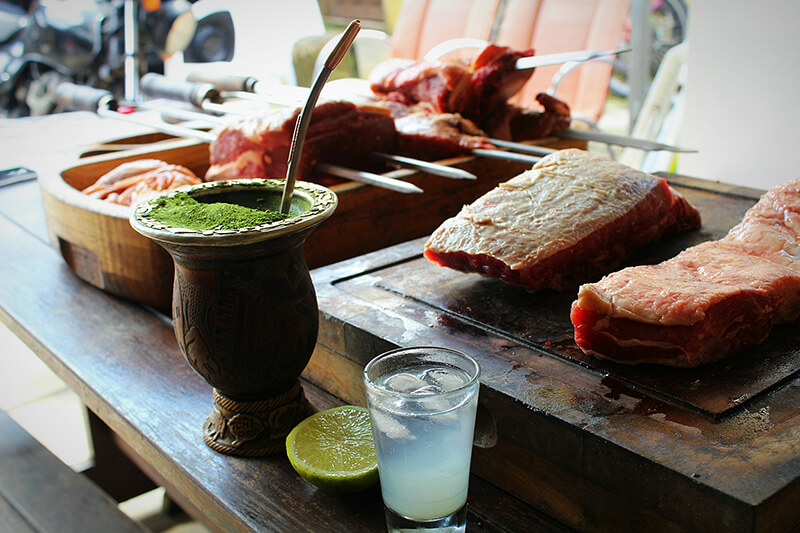
Heaps Of Food!
Sides of farofa, vinaigrette, salads, rice and beans are placed on a central table for people to serve themselves. Once the meat is cooked, it is cut into small bite-sized pieces and offered to all the guests. Depending on the formality level, people will use a fork, or their fingers, to take a piece off of the serving board. The meat is eaten with a sprinkle or farofa and vinaigrette.
The Churrascaria
In the 1950s and 60s, Brazil experienced a boom in the construction of major highways and the trucking freight industry’s rapid development. In Rio Grande do Sul, roadside Churrascarias (restaurants) began to appear, catering to the long-haul truck drivers. However, by this time, the gauchos (as people in Rio Grande do Sul still identify as) had innovated the churrasco concept even further by creating the rodizio style of dining.
Rodízio
Legend has it that a waiter in a busy churrascaria accidentally took a meat skewer order to the wrong table. The mistaken customer declared that he did not order this particular skewer; however, he was envious of the order and asked if he could sample a bit of it before the waiter took it away. The waiter proceeded to slice a small piece off, place it on his plate, and thus was born a new dining experience!
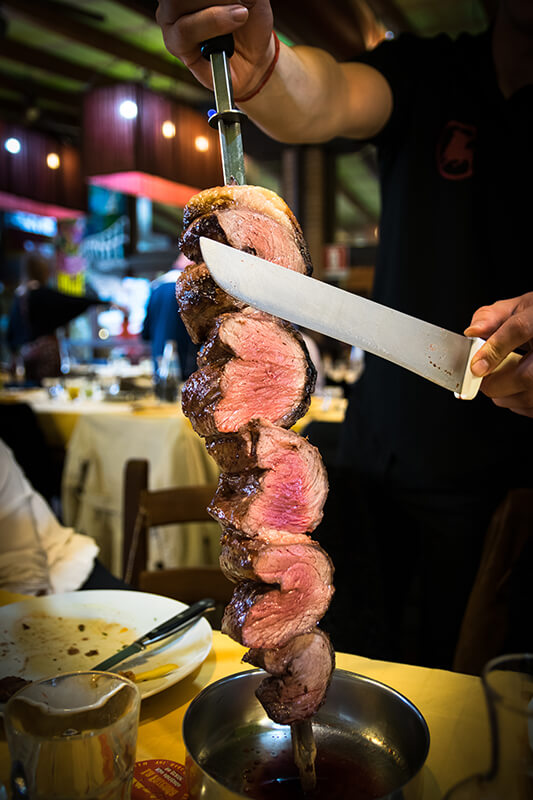
No one knows in whose restaurant this took place (even though many churrascarias claim it), but we know that at some point in the mid-20th century, most churrascarias’ business model changed. Now, rather than offering a dozen set meals on a menu, they paid an affordable fixed price and was entitled to a portion of everything on the menu. The garçoms (waiters) would walk around with the skewers of meat, and if a patron desired that particular cut, the garçom would carve off a few slices on to the plate. Best of all, the customer can eat as much as he desires in a single sitting, including sides, such as farofa, rice, feijão, salads, potatoes, etc.
This method was very popular with hungry truck drivers and travellers. Soon the word spread, and the reputation of Rio Grande do Sul’s rodizio churrascarias was carried across the country. By the 1980s, gaucho or rodizio style churrascarias had opened in Sao Paulo and then all across the nation. By the end of the 1990s, it had spread out of Brazil and found success in countries like the USA, Australia, Portugal and the UK.
Today, the churrascaria is known for being the home of all-you-can-eat charcoal roasted meats. It is still served in the rodizio way and is a favourite of many people worldwide.
Leave a Reply